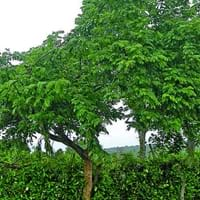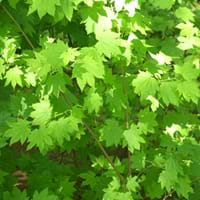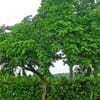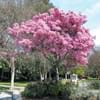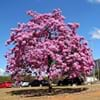Life Span
Perennial
Perennial
Origin
Mexico, Central America, South America
North America, Northwestern United States
Types
Not available
Not Available
Habitat
Subtropical climates, tropical environments, Tropical regions
Forests, gardens, Open Forest, Tropical regions, Wet forest
USDA Hardiness Zone
10-15
5-9
Sunset Zone
H1, H2, 13, 23, 24
A3, 2b, 3a, 3b, 4, 5, 6, 14, 15, 16, 17
Habit
Oval or Rounded
Clump-Forming
Flower Color
Pink, Light Pink
White, Purple
Flower Color Modifier
Bicolor
Bicolor
Fruit Color
Green, Chocolate
Red
Leaf Color in Spring
Green
Green, Light Green
Leaf Color in Summer
Green
Green, Light Green
Leaf Color in Fall
Green
Red, Orange, Dark Red, Orange Red
Leaf Color in Winter
Green
Not Available
Leaf Shape
Pinnate
Maple shaped
Plant Season
Spring
Spring, Summer, Fall, Winter
Sunlight
Full Sun, Partial Sun
Full Sun, Partial Sun, Partial shade, Full Shade
Type of Soil
Loam, Sand
Clay, Loam, Sand
The pH of Soil
Acidic, Neutral, Alkaline
Acidic, Neutral, Alkaline
Soil Drainage
Average
Average
Bloom Time
Spring, Late Spring
Early Spring
Tolerances
Drought, Dry Conditions
Wet Site
Where to Plant?
Ground
Ground
How to Plant?
Stem Cutting
Stem Planting
Plant Maintenance
Low
Medium
Watering Requirements
Average Water Needs, Keep the ground moist but not water-logged
Allow soil to be completely dry in between waterings, Requires consistently moist soil, Requires watering in the growing season, Water Deeply
In Summer
Lots of watering
Lots of watering
In Spring
Moderate
Moderate
In Winter
Average Water
Average Water
Soil pH
Acidic, Neutral, Alkaline
Acidic, Neutral, Alkaline
Soil Type
Loam, Sand
Clay, Loam, Sand
Soil Drainage Capacity
Average
Average
Sun Exposure
Full Sun, Partial Sun
Full Sun, Partial Sun, Partial shade, Full Shade
Pruning
Remove damaged leaves, Remove dead branches, Remove dead leaves
Pinch or prune as they grow to promote branching and bushiness, Prune every year, Prune for shortening long shoots, Prune if you want to improve plant shape, Remove deadheads
Fertilizers
All-Purpose Liquid Fertilizer, Fertilize in early spring, Nitrogen, Phosphorous, Potassium, Requires high amount of nitrogen
All-Purpose Liquid Fertilizer
Pests and Diseases
Aphids, Brown Spots, Scab, Scorch
Billbugs, Fungal Diseases, Red blotch
Plant Tolerance
Drought, Dry Conditions
Drought
Flower Petal Number
Single
Single
Showy Fruit
Not Available
Yes
Fragrant Flower
Not Available
No
Foliage Texture
Medium
Medium
Foliage Sheen
Matte
Matte
Attracts
Bees, Not Available
Not Available
Allergy
Not Available
Not Available
Aesthetic Uses
Beautification, Showy Purposes
Showy Purposes
Beauty Benefits
Good for skin, Reduce Bruises
Not Available
Environmental Uses
Agroforestry, Fixes Nitrogen, Insect Repellent, soil stabilisation
Air purification
Medicinal Uses
Antifungal, Cold, Expectorant, Fever, Rheumatism, Sedative, Ulcers
Not Available
Part of Plant Used
Flowers
Not Available
Other Uses
Cattle Fodder, Used as firewood, Wood is used for making furniture
Not Available
Used As Indoor Plant
No
No
Used As Outdoor Plant
Yes
Yes
Garden Design
Shade Trees, Street Trees, Tropical
Feature Plant, Foundation, Mixed Border, Topiary / Bonsai / Espalier
Botanical Name
GLIRICIDIA sepium
ACER circinatum
Common Name
Mexican Lilac, Mother-of-coffee, Quickstick
Oregon Vine Maple, Vine Maple
In Hindi
QUICKSTICK
बेल मेपल
In German
QUICKSTICK
Wein-Ahorn
In French
QUICKSTICK
Maple Vine
In Spanish
QUICKSTICK
arce vid
In Greek
QUICKSTICK
αμπέλου Maple
In Portuguese
QuickStick
bordo de videira
In Polish
QUICKSTICK
Vine Maple
In Latin
Quickstick
vitis Maple
Phylum
Magnoliophyta
Tracheophyta
Class
Magnoliopsida
Magnoliopsida
Family
Fabaceae
Aceraceae
Clade
Angiosperms, Eudicots, Rosids
Angiosperms, Eudicots, Rosids
Tribe
Robinieae
Not Available
Subfamily
Faboideae
Hippocastanoideae
Number of Species
Not Available
Importance of Quickstick and Vine Maple
Want to have the most appropriate plant for your garden? You might want to know the importance of Quickstick and Vine Maple. Basically, these two plants vary in many aspects. Compare Quickstick and Vine Maple as they differ in many characteristics such as their life, care, benefits, facts, etc. Every gardener must at least have the slightest clue about the plants he wants to plant in his garden. Compare their benefits, which differ in many ways like facts and uses. The medicinal use of Quickstick is Antifungal, Cold, Expectorant, Fever, Rheumatism, Sedative and Ulcers whereas of Vine Maple is Not Available. Quickstick has beauty benefits as follows: Good for skin and Reduce Bruises while Vine Maple has beauty benefits as follows: Good for skin and Reduce Bruises.
Compare Facts of Quickstick vs Vine Maple
How to choose the best garden plant for your garden depending upon its facts? Here garden plant comparison will help you to solve this query. Compare the facts of Quickstick vs Vine Maple and know which one to choose. As garden plants have benefits and other uses, allergy is also a major drawback of plants for some people. Allergic reactions of Quickstick are Not Available whereas of Vine Maple have Not Available respectively. Having a fruit bearing plant in your garden can be a plus point of your garden. Quickstick has no showy fruits and Vine Maple has showy fruits. Also Quickstick is not flowering and Vine Maple is not flowering . You can compare Quickstick and Vine Maple facts and facts of other plants too.
